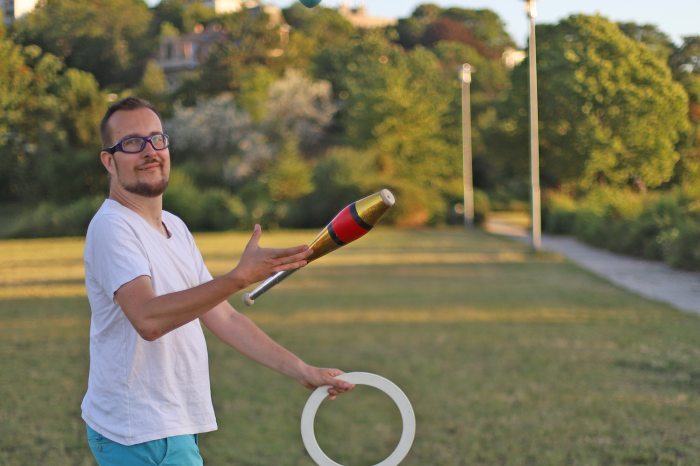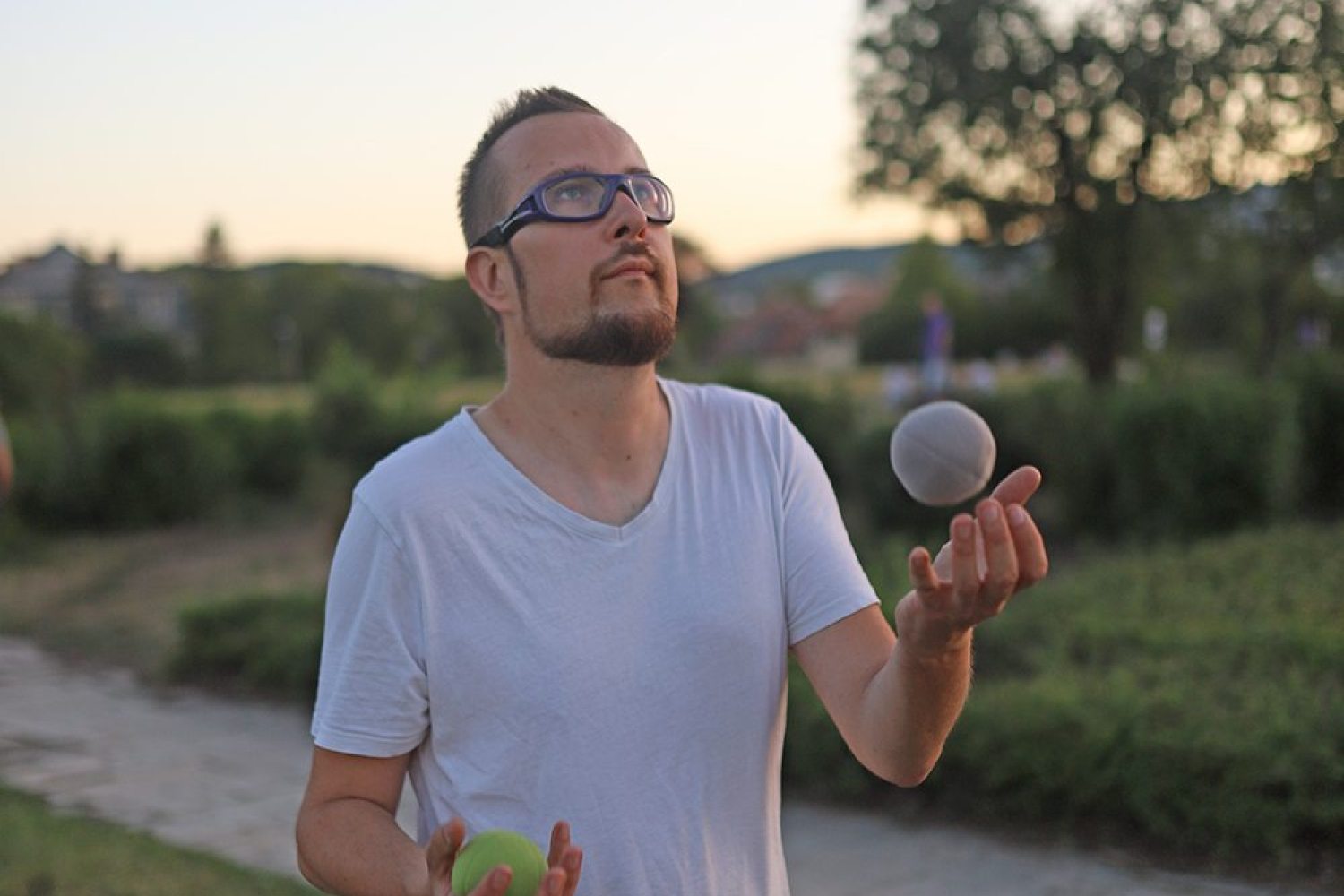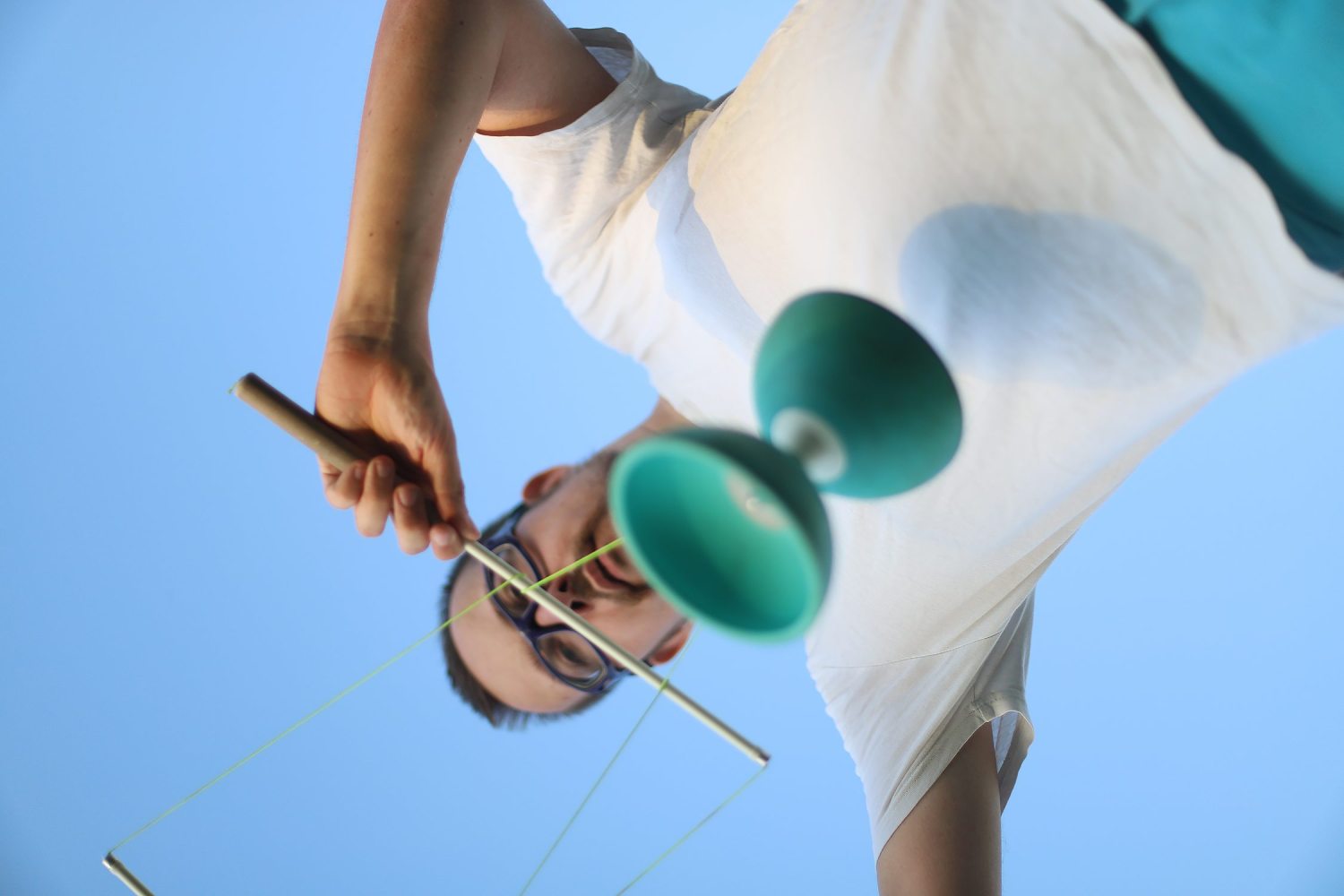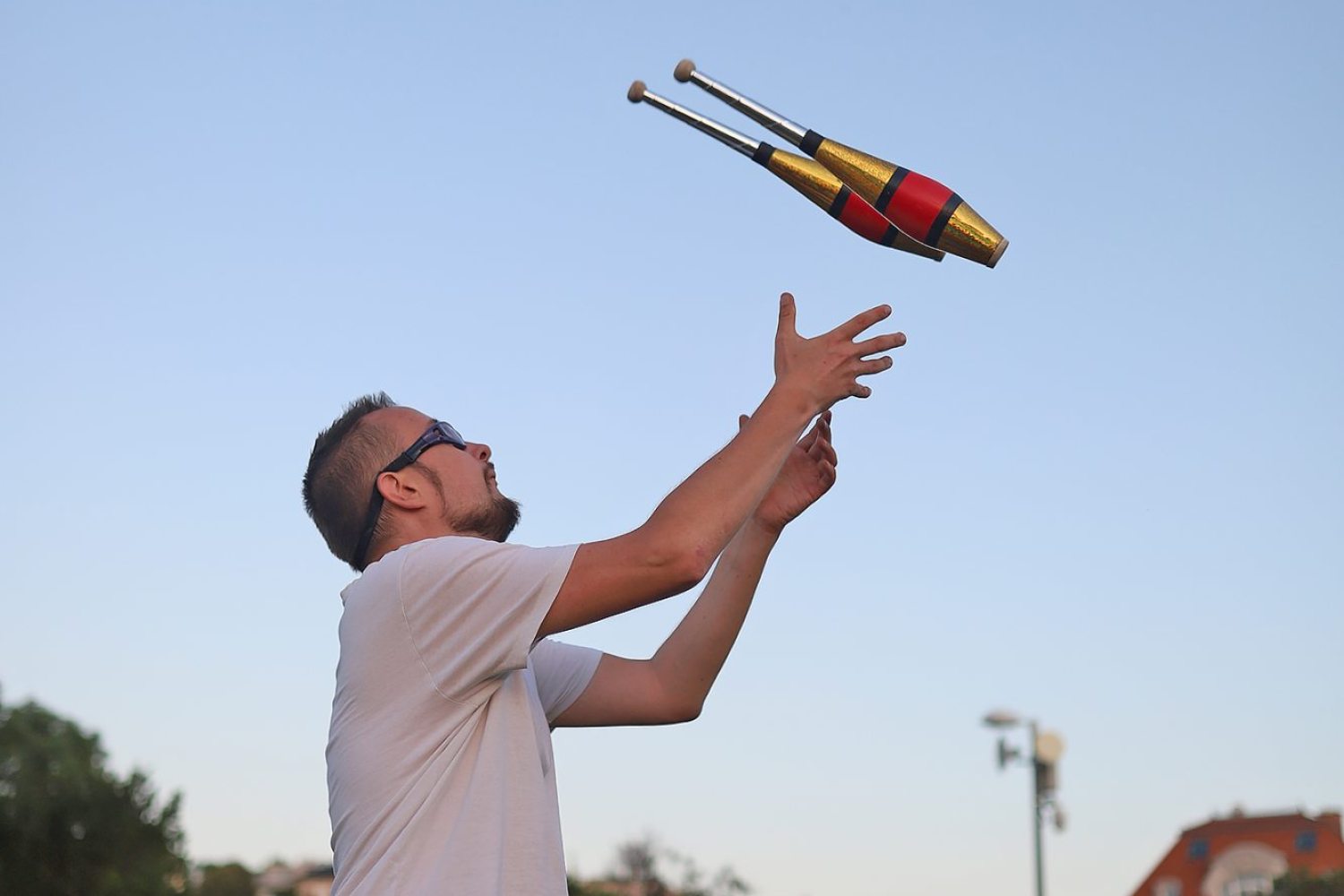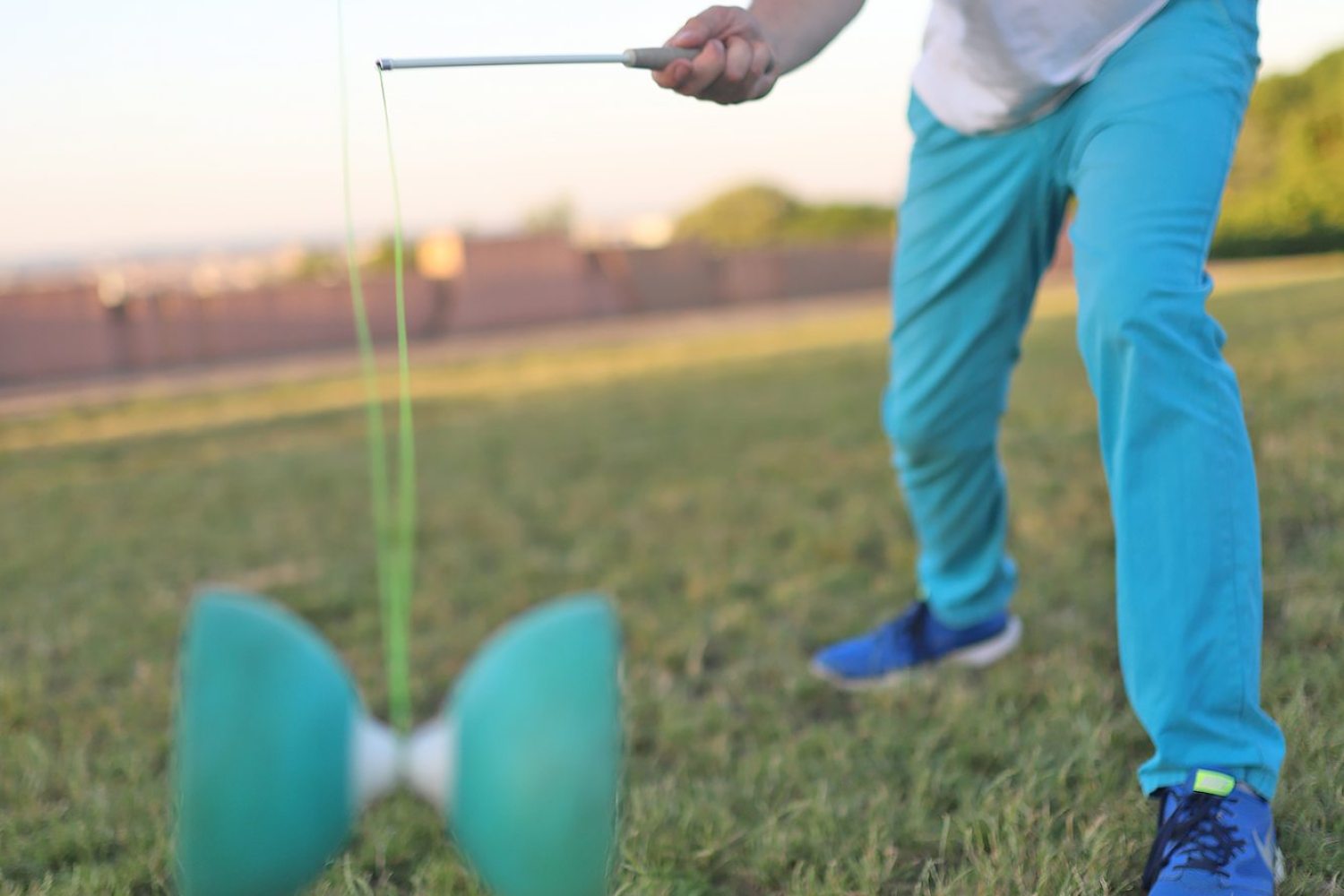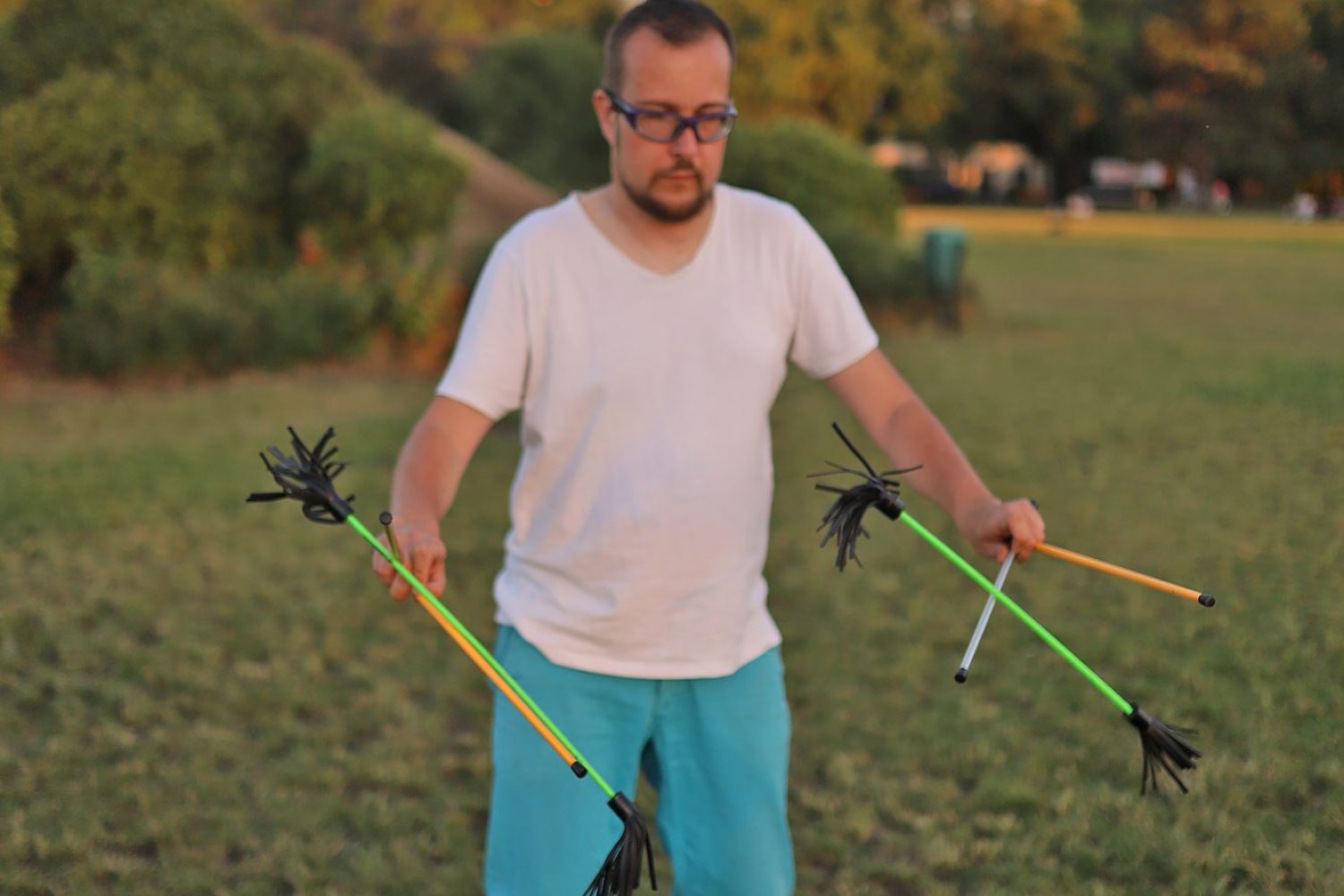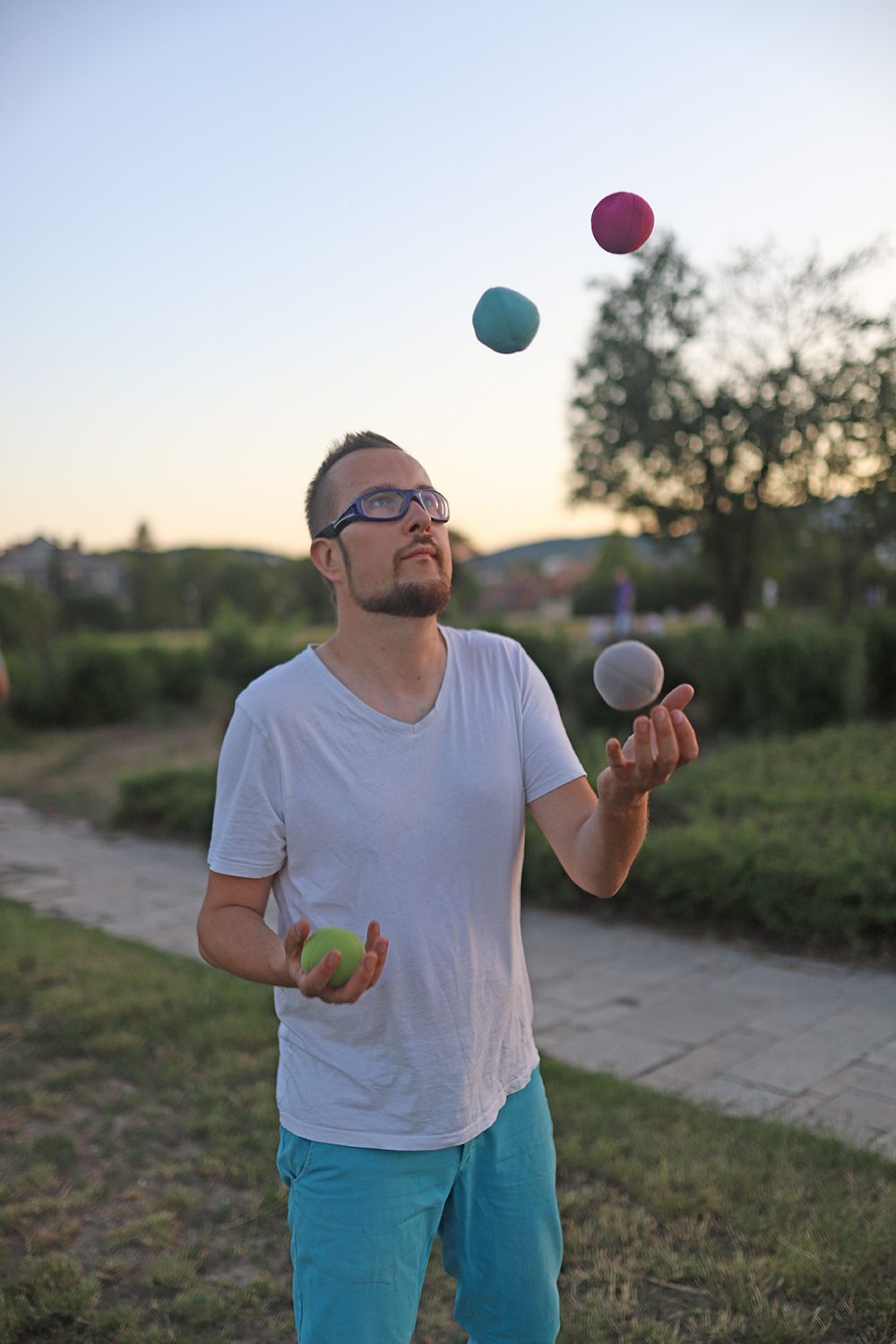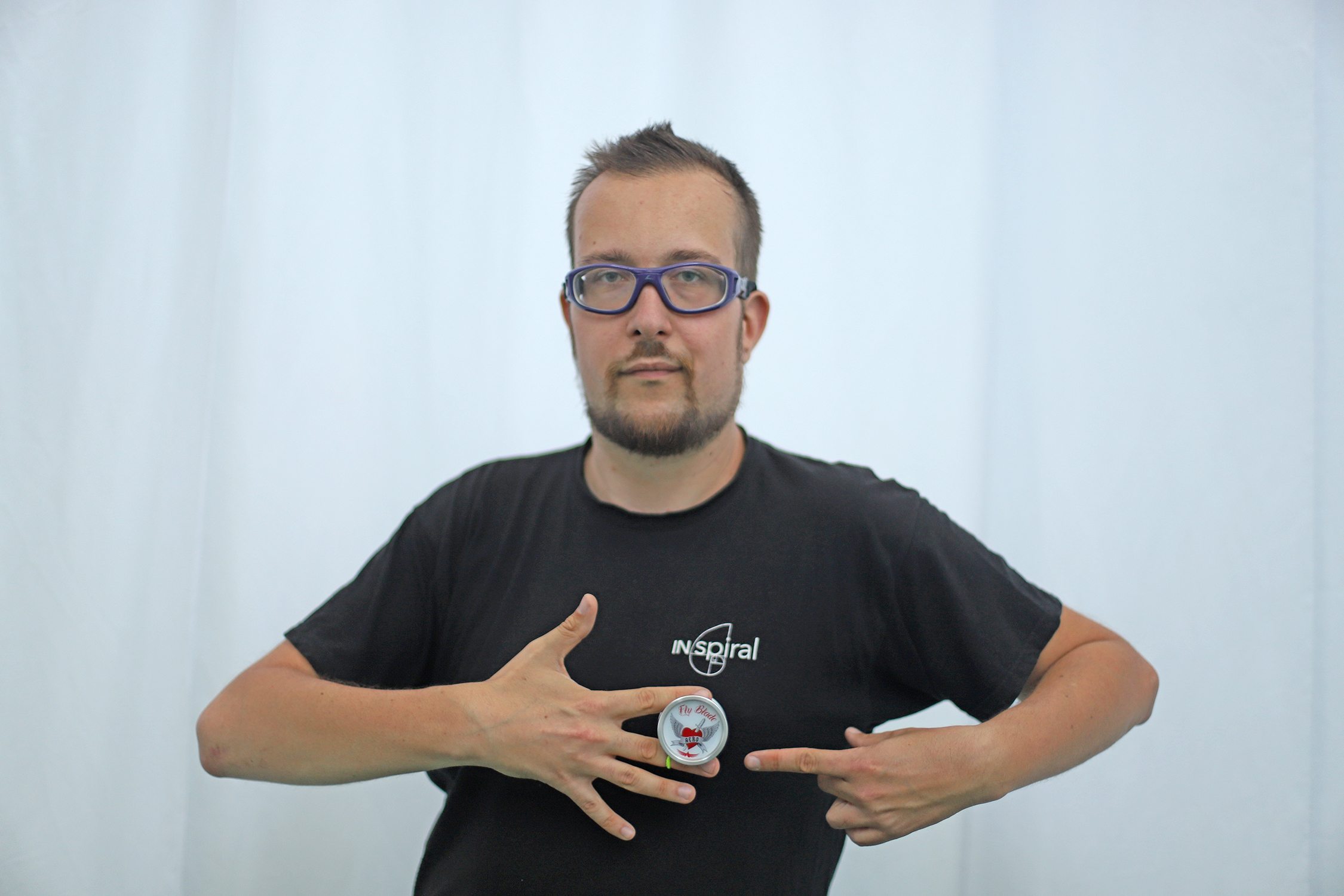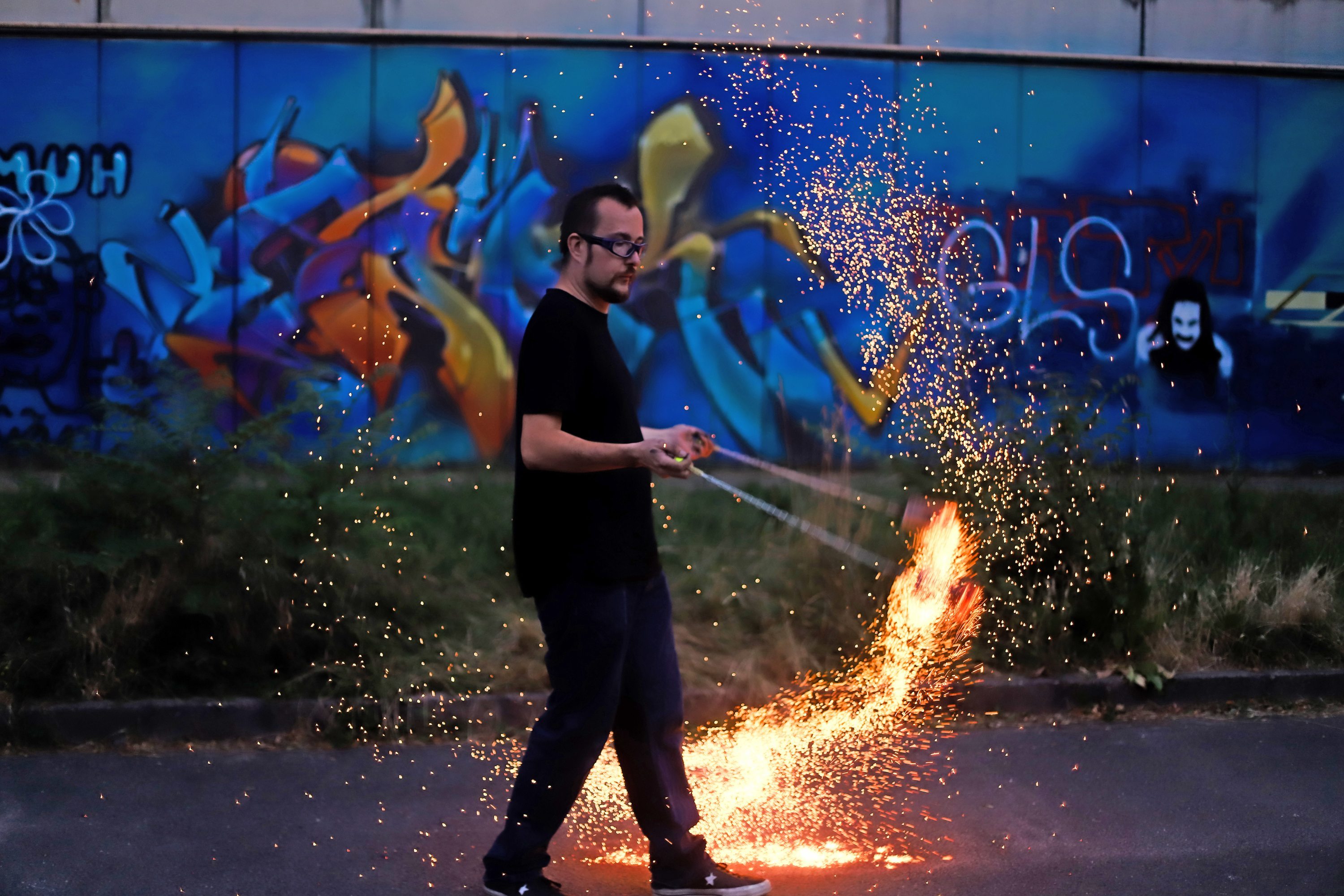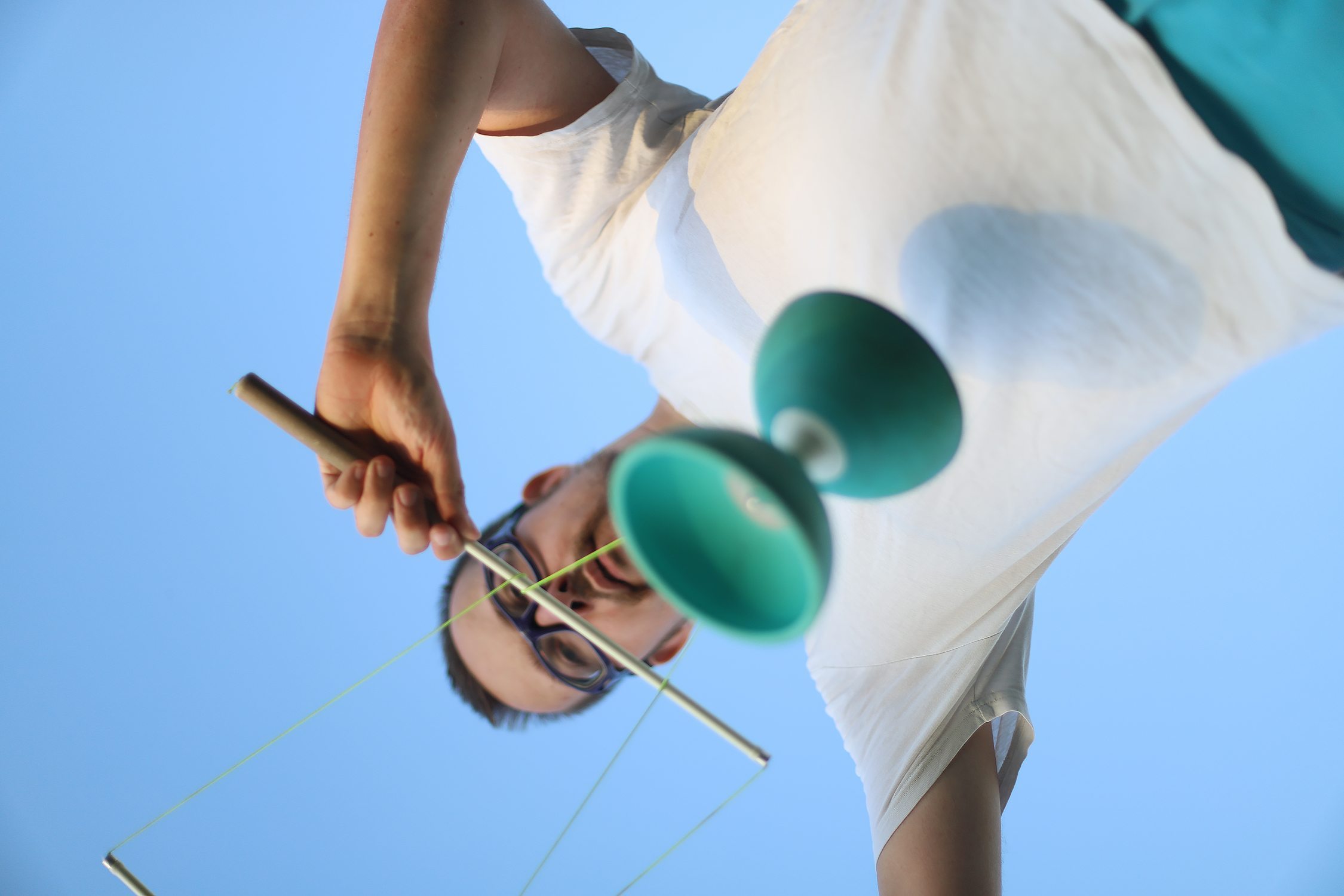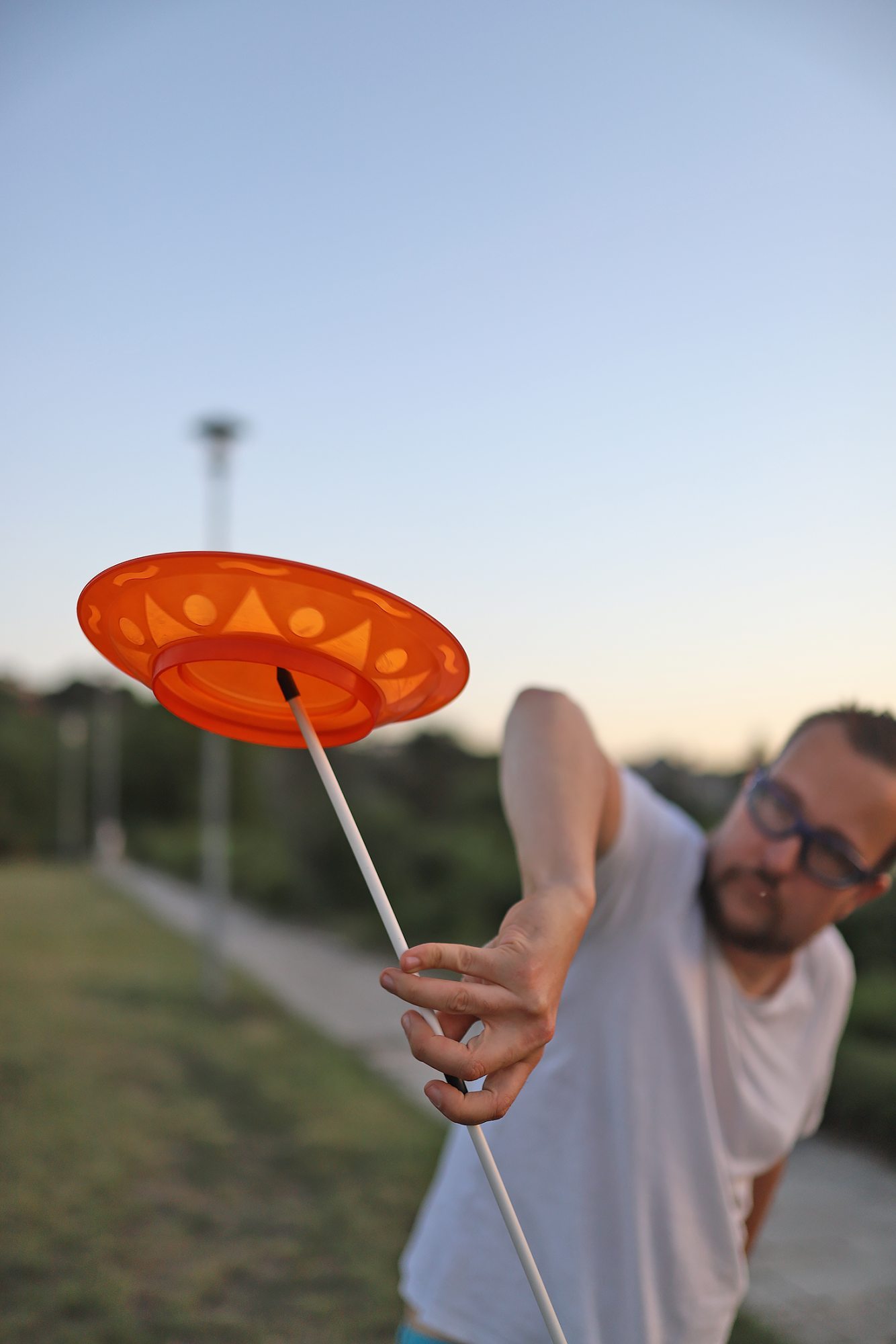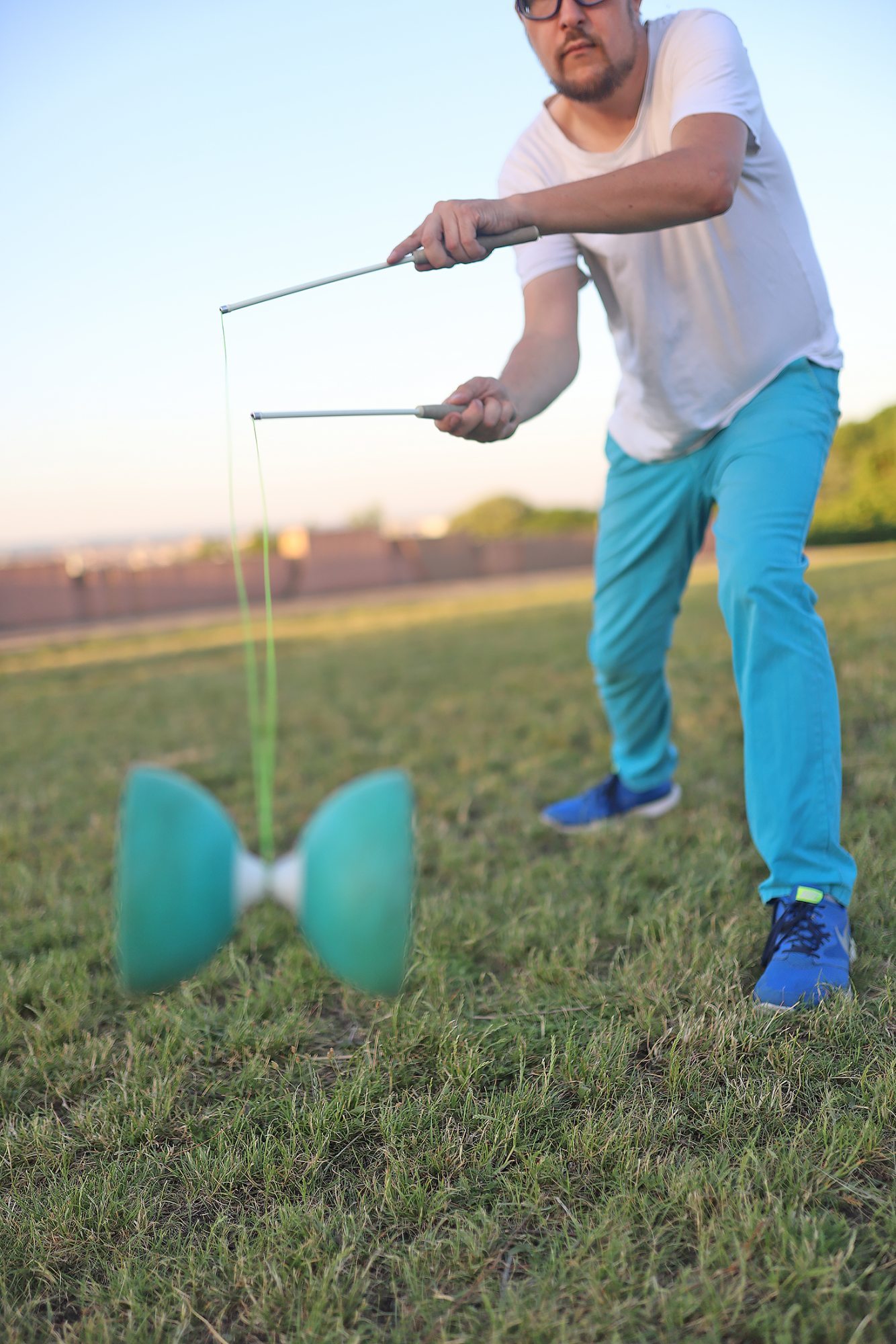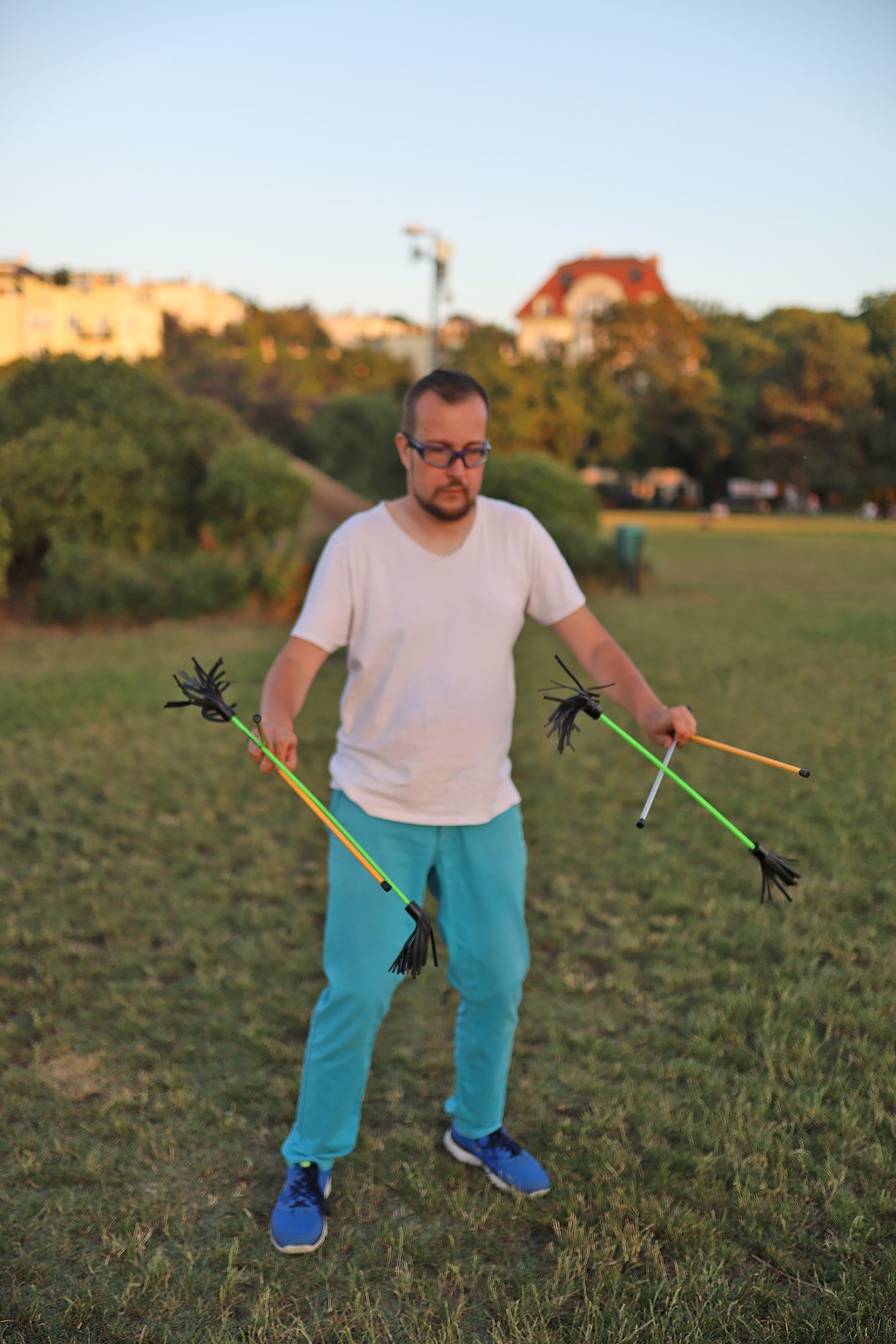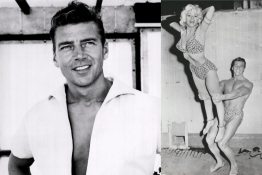"Circus is a tool for shaping the world" – Social circus is both healing and deeply human
The unique world of the circus offers countless stories and metaphors for different artistic disciplines. Although I never really felt attached to it as a child, I later realized that it is deeply embedded in our culture, and has a whole range of experiences in store. If we just think of the short story, The Circus by Frigyes Karinthy, or the recently launched movie Árni about a circus handyman, it is obvious to us that somehow we all do relate to the circus, if only through some form of art. Bendegúz L. Pál, the juggling instructor of the Inspiral Circus Centre, introduces us to the most recent 21st-century circus act: the social circus.
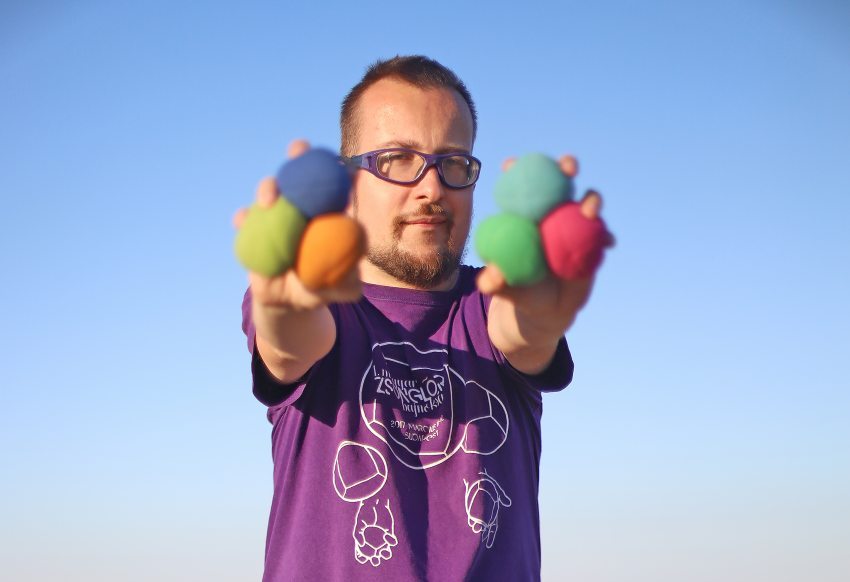
Do you have a defining childhood experience of the circus?
It wasn’t part of my life as a kid, although I did watch movies about it and saw the red-and-white Big Top from a distance, but I didn’t get further than that. When I was little I had a serious heart problem, I had several open-heart surgeries, so my parents were over-protective. Pushing my own limits was an unknown dimension for me, I was happy when the boys let me be a goalkeeper, I Wasn’t fit enough to run. I started playing active, skill-based games when I was in my teens, I was a yoyo player.
I went to competitions, I was in the top ten of the national yo-yo scene, but what I enjoyed most was sharing my skills with my friends from school.
My real encounter with the circus happened when I was in my twenties when I went to the Hungarian Jugglers' Meeting gala and met performers who represented the new circus genre. They showed a fresh approach that moved away from the center-ringed, riding-schools, ringmaster story. The jaw dropped.
At that time, the idea was that juggling, tightrope walking, somersaulting, and hanging on a trapeze were only to show the audience what you could do, and earn money from it.
When they hear the words circus, most people think of exotic animals, clowns, equestrians, rings and whips, the heightened atmosphere, the clown's fumbling, or the amazing performance of aerialists. Breathtaking skills and tricks to entertain the audience, there's popcorn – everything to get the gaping-eyed 'inner child' going. The circus is often associated with children, or we go there for the children, to show them how many amazing things there are in the world. Travelling circuses have also been successful because they have brought things to the villages that the people there would otherwise have never had the chance to see. They took the grandeur and immensity of the world, the full unfolding of human potential and skills, to places where life was just about simple possibilities. These were experiences of a lifetime.
My mother is a fashion designer, I got to meet a lot of artists as a child, and our house is decorated with serious artwork, so I wasn't influenced by the simpler entertainment industry at the time.
One thing influenced me more than that: my mother often told me to stop making a scene.
In the end, it turned out that “making a scene” became my profession, we often laugh about it, what power words have...
In fact, you've become convinced that we should let everyone “make a scene”...
What I would like most of all, is for people to see that the circus today is about something other than what is commonly believed. I, too, as an adult, have come to understand that the 21st-century circus has gone beyond the typical circus culture as we know it to an amazing degree. Traditional circus is a very elaborate, sophisticated entertainment art form, but it is often about appearance, its history intertwined with animal acts. Today, this attitude has been overcome.
The traditional circus sells skills that only circus performers have. They pass it on through dynasties and keep the tricks and methodology behind the acts secret, as it is their bread and butter.
This year marks the 257th anniversary of the modern circus, which we have been counting since the first time clowns, jugglers and aerialists, in general term acrobats, took to the stage between the equestrian acts to provide entertainment during the preparation time between the two animal acts. The clowns could also ease the tension if there were any mishaps with the misbehaving animals. This format was a huge success, even the name refers back to the tradition of the Roman circus.
This genre is also special in Hungary because we have had a circus building since the 19th century, this is the Capital Circus of Budapest, and no neighbouring country can claim to have one.
The traditional circus has always been about achievement, form and performance. How did the need to break through this arise?
Circus arts is a creative genre with a strong tradition, I could perhaps compare it to ballet, which is also linked to performance-based standards, form, and execution. It was taught within closed doors, often on a dynastic basis, and circus artists, like magicians, guarded their professional secrets. In the 20th century, a break with the previous form became a regular occurrence, which many linked to the student uprisings of '68 when circus students also rebelled. This led to a drastic change in approach, as young circus performers began to share their knowledge with the public.
Liberation, sharing, a fresh start: were these the internal driving forces?
As a result of the opening, circus skills were also taken up by people who had previously had nothing to do with it, but were interested, such as performers, teachers, or social workers. This has led to an exciting explosion, with a wider and wider range of people seeing circus as an opportunity and a tool. Professional circus knowledge was taken out of the Big Top, circus as a methodology was introduced into the living space of communities, and it was no longer just a goal to get into the circus or to become an artist through a life's work.
This open-minded approach has had an impact on the circus arts, and over the past 30 years, acts have evolved tremendously, new tools have been created, nontraditional styles have emerged, and even a unified mathematical language has been developed to describe juggling tricks. Circus schools used to work with different methodologies, and had different names for the different juggling tricks, but today I can model the different forms of tricks with a phone app while walking down the street and practice them at will.
The Hungarian Juggling Association has been introducing anyone to circus science in Hungary for more than 20 years, and that's why we created the Inspiral Circus Centre in Újbuda, in the birth of which I actively participated in 2016. This approach is called New Circus: there are no exotic animals, the focus is on the overall artistry, on human creativity, and we are defined by a community approach.
We stand on the shoulders of giants, with a circus tradition that goes back more than 250 years, and it's a beautiful mission to carry it on in a sustainable, inclusive way.
How did the New Circus encounter social inequalities?
It was an exciting discovery that the circus can be a developer in more than one aspect. First of all, its social environment motivates and excites. A circus troupe is a special community, and its greatest strength is that what it creates is not ordinary, culture- and nation-independent. Creativity and the art of movement are expressed in collaboration, in joy, not competition. The point is to have fun, to have shared experiences, to live our creativity, to laugh a lot. Teachers and special education teachers have noticed that it also has a neuro-developmental effect. Complex movements such as acrobatics or juggling involve constant midline crossing and alternating sides, so they have a strong effect on the nervous system.
Yemeni refugees, immigrants, homeless children, people living with disabilities or in slums, psychiatric patients, prisoners, and drug addicts – the genre has an infinite variety of applications.
I have experience in all these areas. Social circus is the participatory use of circus arts to promote social inclusion. The professionals in this field are jugglers, acrobats, clowns and tightrope walkers, or even teachers who have realised the integrating, developmental and retaining power of the circus world. My favourite definition of circus is "the ring in which anything can appear". There is nothing in the world that you can define as not being a circus.
Here there is no exclusion, rejection or shaming. The circus is a tool for shaping the world.
Where did you find your place in it?
I work in the Hungarian Juggling Association, I teach at the University of Óbuda and the University of Pannonia, and I run projects. One of them was when we created a joint programme with Roma children from Borsod county. We also hold weekly circus workshops with a small team of social circus trainers in a youth centre in Pesterzsébet, and we have also had drama education circus workshops in Karancslapujtő. These sessions offer the opportunity to connect: it is a living, deeply human and healing experience, and it shows pure, healthy self-love. Social circus performances have an impact on people, changing their perception of the performers. They see that these young people can do things they never thought they could do. We're not training professional acrobats, we're building community, taking circus skills on tour or performing for the village next door.
Is learning circus tricks a visible sign of the reality of "I can do it" for the participants?
The biggest benefit of juggling, apart from its neurodevelopmental effect, is that it helps us to face learning obstacles. After all, for everyone, there comes a point when I give them a task so difficult that they fail. It is then that I can pass on a healthy attitude to failure, which enables me to maintain my perseverance, my faith in myself and in others, for example, that I will not be laughed at. And in God, that it is worth putting my energy into. There is no perfectionism here, no experience of punishment.
We start by letting the tool fall and experience that it's not a terrible thing, it's not a failure, we don't get punished for it.
We experience that gravity is our friend, we have no fear of the physical laws of the world. The circus is for everyone, everyone can use it, it is a spirit worth living in.
If we create a small community, where we listen to each other, and pay attention to each other, then is it not completely irrelevant whether it's a circus or a stamp collection club or something else?
It is irrelevant because this is love, the highest degree of art. And the circus has the great advantage of being incredibly attention-grabbing, which means it's easy to get people to get involved.
